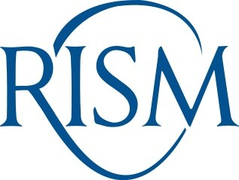Musical Sources of the 19th century in Germany
Wednesday, May 8, 2024

Last fall we called your attention to a symposium held at the Bavarian State Library in Munich to celebrate the 70th anniversary of the founding of RISM’s German working group. The title – “Musical Sources of the 19th Century in Germany: Challenges and Opportunities” – promised less an overview of the cataloging work accomplished in the past than an exploration of future perspectives, and the event indeed touched upon several questions the German RISM community will have to come to terms with, if deciding for a more or less systematic cataloging of 19th-century sources.
A thoughtful report of the symposium by Florence Eller and Viola Herbst has recently appeared on the website of the Gesellschaft für Musikforschung, which provides all interested parties with brief summaries of each presentation (unfortunately only in German, but readers not familiar with that language can of course easily avail themselves of an online translator). With that in mind, it is perhaps only meaningful to make a few general observations here that point beyond the content of the individual contributions.
While more recently RISM has opened its gates and now allows for the cataloguing of music manuscripts without any time restriction, as well as of printed editions published until about the end of World War II, for the larger community of users the RISM Catalog and RISM Online are still predominantly search tools for music before 1800. The founding fathers’ choice of this closing date for the first RISM series A/I and B/I–II may seem arbitrary in retrospect, but it certainly reflected a very pragmatic concern, namely that the amount of surviving source material from the 19th century on is such that complete coverage (which was seen as an ideal goal in those early days) seemed unrealistic. In that light, it comes as little surprise that some of the speakers of the symposium called for certain simplifications of the cataloging process in the hope of saving time – whereby lowering the cataloguing standards for certain types of repertory should obviously present significant structural challenges in the case of a database already including over 1.5 million source descriptions prepared according to the traditional standards.
Furthermore, the musical sources of the 19th century are not only increasingly numerous but also increasingly diverse, and some catalogers understandably expressed an interest in developing specific standards and vocabularies for the various types of sketches, drafts, house copies, printer’s copies, annotated proofs, and so forth. However, as others have pointed out, if the RISM database is meant to support the inclusion of such a vast array of materials, but at the same should also keep allowing for meaningful searches across the entire data pool, many specific details should inevitably be ‘rounded off,’ and the highly specialized terminology of this or that research field must yield to more general formulations (at least in the description fields with controlled vocabulary). Indeed, from the editorial point of view the most intriguing lesson to be learned from the entire symposium was how the (in their own context, perfectly justifiable) initiatives to reduce the depth of cataloging and the (equally understandable) desire of specialists to find an appropriate place in RISM for all of their in-depth insights, present us with mutually exclusive expectations. Navigating here between Scylla and Charybdis will not be easy, but RISM needs to take on this challenge if we wish to further increase our coverage – by no means only with respect to “Musical Sources of the 19th century in Germany.”
Share Tweet EmailCategory: New at RISM

